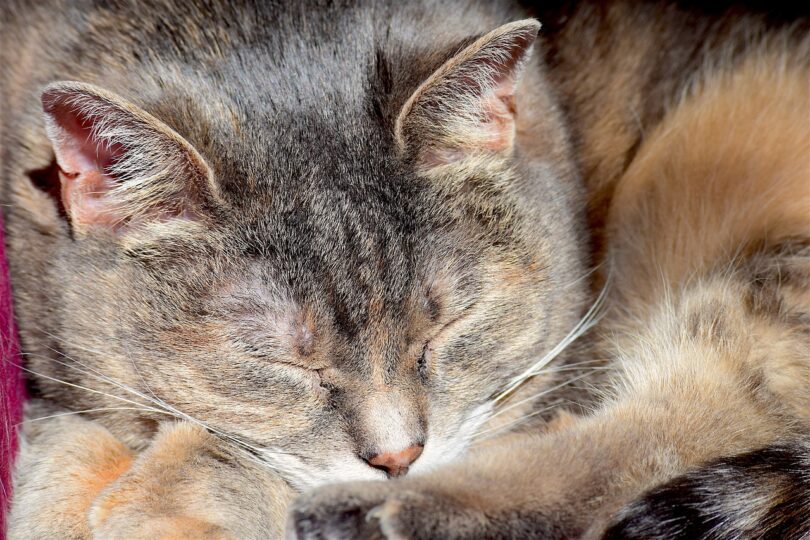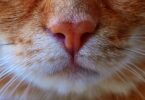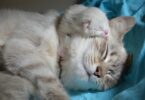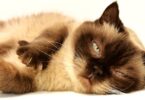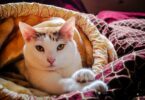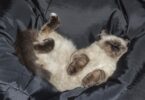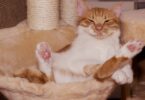Are you worried about your cat drinking more water and urinating more often than usual? You are right to be aware of this phenomenon, which can be a symptom of serious health problems. Fortunately, solutions exist if you act quickly.
What are the cat’s water needs? Is my cat really drinking too much?
Do you think your cat is drinking more than usual? Before worrying, it is necessary to check if this water consumption is really excessive. But do you know how much water a cat should drink in a day? And how do you measure what your cat is actually drinking?
How much water should a cat drink in 24 hours?
It is estimated that an adult cat should drink between 40 and 60 ml of water per day per pound, depending on its diet and lifestyle. A four-kilo cat therefore normally consumes between 160 and 240 ml per day. He does not drink this amount all at once but instead laps small sips up to twenty times a day.
How do you measure the amount of water your cat drinks?
To know exactly how much water your cat is drinking each day, measure the amount of water you pour into her bowl using a measuring cup. Make sure that only your cat drinks from this container. Each time you change the water (approximately every 12 hours) measure how much is left. By doing a simple subtraction, you will get the amount drunk during those 12 hours. Repeat for several days in a row, and you can calculate the average amount your cat drinks in 24 hours.
Polyuropolydipsia (PUPD)
Have you measured how much your cat drinks each day, and it is too high? This excessive thirst is called polydipsia. Most of the time, a cat with polydipsia also urinates more often than normal. This phenomenon is called polyuria. The combination of the two symptoms is called polyuropolydipsia, often referred to by its acronym PUPD.
Why is my cat drinking a lot of water?
In the vast majority of cases, a cat who drinks more than usual does so to fight against dehydration. But the root causes that can lead to polydipsia are varied. It may be a simple passing phenomenon due to a particular situation. But this excessive thirst can unfortunately also be due to more or less serious diseases. It is therefore important to know the different reasons that can lead a cat to drink more than usual.
It is too hot
Just like you, your cat tends to drink more when the temperature rises! The same is true if your home is overheated or the air is very dry. This is nothing to worry about, and everything will be back to normal as soon as the temperatures drop. However, be sure to protect your cat in times of heatwave, because the high heat can be very dangerous for your felines.
She’s a nursing cat
Much of the milk of a nursing mother is water. The drinking needs of a cat nursing a litter are therefore greater than in normal times. We invite you to discover this topic on the pregnancy of the cat.
His food does not contain enough water
The amount of water in different types of cat food varies widely. Indeed, the mash is composed of 80% water, while the croquettes contain only 10%. If you change your cat’s diet from wet food to kibble, then it is normal for you to see an increase in water consumption.
He has hyperthyroidism
Hyperthyroidism can cause a number of symptoms in cats, including PUPD. It also sometimes presents with weight loss, digestive problems and increased appetite. Hyperthyroidism mainly affects older cats, so they often have kidney failure.
He suffers from kidney failure
Unfortunately, it is common for cats to develop chronic kidney disease as they get older. The kidney deteriorates and no longer performs its function of filtering toxins properly.
This results in polyuropolydipsia, but also in vomiting, loss of appetite, weight loss, and depression. Chronic kidney disease should not be confused with acute kidney disease, which occurs suddenly at any age and often, but not entirely, results in difficulty urinating.
Kidney failure can also occur at any age, due to a kidney infection, the presence of stones in the urinary tract, inability to pass urine due to urinary obstruction, or a neurological problem. It can also be added to chronic renal failure.
He suffers from a urinary tract infection
Your cat may also drink more if she has a UTI or uterine infection if she is a female.
He is diabetic
Like humans, cats can be affected by diabetes. Diabetic cats will lose weight despite a dramatic increase in their appetite. Since sugar is not used by the body, it will be passed with the urine. The cat will have to urinate more, therefore drink more to fight against dehydration, and he will then develop PUPD.
Disturbing symptoms
While some of the causes of excessive thirst in cats are benign, others put their health at serious risk. As long as your cat is drinking more than usual without exhibiting any associated symptoms, there is no cause for alarm. Just monitor her water intake for a few days to make sure she is back to normal. On the other hand, if polydipsia persists or is associated with any of the following symptoms/elements, you should be alarmed:
• polyuria;
• increased appetite;
• loss of appetite;
• sores in the mouth;
• diarrhea;
• vomiting;
• abnormal agitation;
• fatigue, depression, prostration.
When to see a veterinarian?
If you notice that your cat is drinking more than usual over several consecutive days and/or has at least one of the symptoms listed above, see a veterinarian very quickly. Kidney failure and diabetes are serious conditions that can progress quickly after symptoms appear. Your pet’s state of health can then deteriorate very quickly, and his vital prognosis can be compromised. Only a veterinarian will be able to diagnose and take the necessary steps to ensure that your cat receives the proper care.

